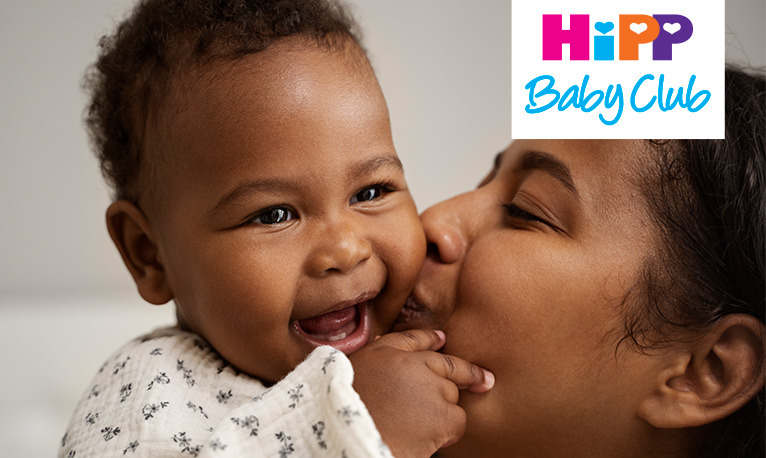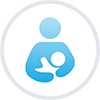Type of Baby Skin Conditions: Causes & Coping
Cradle cap, dry skin, eczema and infant acne: what causes them and how to treat them
As ne parents, we have a completely understandable tendency to marvel over our newborns: the flawless skin, the rosebud lips, the tiny fingers and even-tinier fingernails. Everything about them seems fresh, new and pretty much perfect.
Unfortunately, for many babies that angelic perfection gets brought back down to earth a bit in the weeks after the birth, when some very common skin complaints may show up. Here are the usual suspects, and your best plan for dealing with them (and getting your little one back to his or her usual state of perfection, in Mum’s and Dad’s eyes at least!)
Cradle cap
The medical name for this common condition is seborrheic dermatitis; it causes scaly, yellowish patches to form on your baby’s scalp, a bit like a really bad case of dandruff. These patches are made up of dead skin cells and sebum, a substance secreted by the oil glands in your baby’s scalp. It’s not itchy or contagious, and it’s not caused by poor hygiene – so don’t worry, you’re not doing anything wrong! Most doctors think it’s a reaction to the hormones your baby got from you during the birth.Cradle cap usually clears up on its own, but there are a few things you can do to help it on its way:
- Wash with an ultra-mild baby shampoo at bathtime, then use a soft-bristled baby hairbrush afterward to gently loosen and remove flakes.
- Rub a bit of a gentle oil, like vegetable or sweet almond oil, into your baby’s scalp before bedtime – why not try HiPP’s baby oil, then brush in the morning to remove any loosened bits. (Avoid using peanut or groundnut oil, which could potentially trigger an allergy, or olive oil, which can irritate delicate baby skin.)
- We know it’s tempting, but try not to pick at the scaly bits, as this can cause an infection. If you do notice a lot of redness on your baby’s scalp, or if the cradle cap starts to spread to other parts of the body, ask your health visitor or GP for advice.
Dry skin
In the first months of life, your baby’s skin is still maturing, and you may well notice a bit of dryness and flaking as his or her system adjusts to life in the outside world. This is one reason midwives often try to leave the creamy, protective vernix in place after the birth; it’s a wonderful natural moisturiser and helps protect that delicate skin in the first few days of life.
If your baby was overdue, much of the vernix may well have been absorbed into his or her skin before birth, so dryness is more likely, and you may even see a lot of peeling. Don’t panic – this is normal, and all that flaking will reveal perfect baby skin underneath.
The best way to help this process along is to add a bit of an ultra-mild emollient to your baby’s bath (be careful, though – this can make your baby quite slippery!) and use a gentle, nourishing moisturiser afterward. Regular baby massage with a nourishing oil can also help to gently stimulate the skin and encourage those flakes to take their leave.
Eczema
Eczema, aka atopic dermatitis, makes the skin itchy, dry and reddened. Doctors don’t know the precise cause, but it’s linked to a family history of allergies like asthma and hayfever. Food allergies can also sometimes play a part (though they don’t directly cause the eczema, they can trigger it). Babies most often get patches of eczema on their face, scalp, and torso. These patches are very itchy, and they may become weepy or crusty. Nearly all children with eczema will have symptoms before age five, and around two-thirds of them will improve greatly by age 16 – but in the meantime, this condition can be challenging to manage. Here are some tips:
- Keeping the skin supple and protected helps to relieve itching and prevent infection. Using ultra-mild emollients in the bath and throughout the day will help to create a protective barrier between the skin and any irritants.
- Make sure your hands are very clean before applying lotions or creams, as eczema makes skin more vulnerable to infection. Pump dispensers are best for lotions, as they keep bacteria out of the container; if you have a tub of cream, use a clean spoon to take out what you need.
- If your baby’s eczema is more severe, your GP may prescribe a corticosteroid cream to reduce inflammation. These are safe to use, but make sure you’re applying them exactly as your doctor advises.
- Some babies have lots of trouble with itching, and may scratch themselves, which can lead to infection. Special garments like scratch mittens or sleeves can help with this, but you’ll also want to make sure your baby’s fingernails are kept short, to minimise any damage.
- If you notice your baby’s rash is weeping or has a yellowish crust, consult your GP, as this can signal a bacterial infection that will require prompt treatment.
For more information on treating eczema in babies and children, you may also want to visit the Allergy UK webpage.
Baby acne
It seems very unfair, but some babies do develop small pimples on their forehead, cheeks and nose in the month after the birth. This is known as neonatal acne, and while it doesn’t look pretty, it’s nothing to worry about and usually clears up on its own in a few weeks’ time. In the meantime, keeping the area clean with plain water is all that’s required – leave the spot cream for the teenage years!
A few older babies also develop pimples or blackheads, called infantile acne. This sometimes needs medical treatment, so it’s worth consulting your GP.


